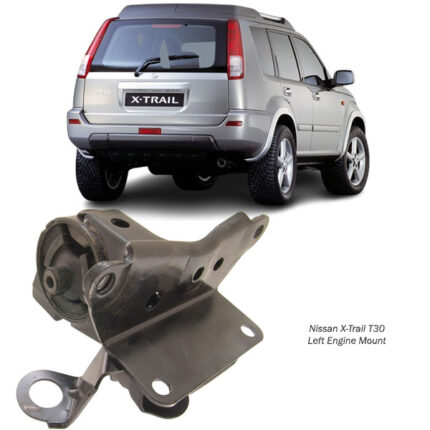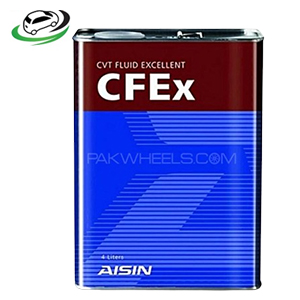Get Nissan X-Trail T30 Front Engine Mount 11270-8H310 in Kenya
An engine mount is a crucial component in a vehicle’s drivetrain system, designed to secure the engine to the chassis while dampening vibrations and absorbing shocks. The front engine mount is particularly important in front-wheel-drive and transverse-engine vehicles, as it plays a vital role in stabilizing the engine, reducing noise, and preventing excessive movement.
In this detailed guide, we will explore the function, types, symptoms of failure, benefits, replacement process, and maintenance tips of front engine mounts.
1. What is a Front Engine Mount?
The front engine mount is a rubber or hydraulic component housed in a metal bracket, positioned at the front of the engine, near the radiator. It serves as one of the key support points that help hold the engine in place while allowing for limited movement to accommodate torque and vibrations.
Primary Functions of the Front Engine Mount:
Secures the engine to the chassis
Reduces engine vibrations and noise
Absorbs shocks and impacts from road irregularities
Prevents excessive engine movement during acceleration and braking
Enhances driving comfort and stability
2. How Does a Front Engine Mount Work?
A front engine mount is designed to balance stability and flexibility, allowing the engine to move slightly without causing discomfort to the driver. It works by:
Supporting Engine Weight: The mount holds a portion of the engine’s mass, preventing it from shifting excessively.
Dampening Vibrations: Rubber or fluid-filled components absorb vibrations caused by engine operation and road conditions.
Managing Torque Forces: During acceleration, braking, or gear changes, the mount restricts excessive engine rocking or twisting.
Without a properly functioning front engine mount, the vehicle would experience severe vibrations, loud noises, and drivetrain misalignment.
3. Types of Front Engine Mounts
There are several types of engine mounts, each designed for different vehicle applications and performance requirements.
A. Rubber Engine Mounts
Made of solid rubber encased in metal
Most common type in standard vehicles
Absorbs vibrations but allows for some engine movement
Best for: Everyday passenger vehicles and light-duty trucks.
B. Hydraulic (Fluid-Filled) Engine Mounts
Contains hydraulic fluid inside a rubber housing
Reduces high-frequency vibrations for a smoother ride
Often found in luxury or high-performance vehicles
Best for: Vehicles requiring reduced cabin vibrations and noise.
C. Polyurethane Engine Mounts
Made of polyurethane material (more rigid than rubber)
Provides better durability and torque resistance
Can transfer more vibrations to the cabin
Best for: High-performance and racing vehicles.
D. Active Engine Mounts (Electromagnetic or Vacuum-Controlled)
Uses sensors to adjust stiffness and damping based on engine load
Found in modern vehicles with advanced NVH (Noise, Vibration, and Harshness) control
Best for: Luxury cars and hybrid vehicles with variable engine load requirements.
4. Symptoms of a Failing Front Engine Mount
A worn or broken front engine mount can lead to drivability issues, discomfort, and potential damage to surrounding components. Here are some common symptoms of failure:
A. Excessive Vibrations
Increased vibrations in the steering wheel, dashboard, or floorboard
More noticeable when idling or at low speeds
B. Clunking or Banging Noises
Loud knocking or thumping sounds when shifting gears or accelerating
Indicates the engine is moving excessively due to a weak mount
C. Engine Movement or Tilting
Visual rocking or shifting of the engine during acceleration
Can cause misalignment of belts, hoses, and exhaust components
D. Increased Cabin Noise
Loss of vibration damping leads to higher noise levels inside the cabin
Could be mistaken for faulty suspension or wheel bearings
E. Misalignment of Other Components
Weak mounts can cause excess strain on the driveshaft, transmission, or exhaust system
May lead to increased wear on belts, pulleys, and hoses
Ignoring these symptoms can lead to further damage to the engine, transmission, and exhaust system.
5. Causes of Engine Mount Failure
Several factors contribute to the deterioration of engine mounts over time:
Aging & Wear – Rubber or hydraulic fluid degrades after years of use.
Heat Exposure – High engine temperatures cause rubber to harden and crack.
Oil Leaks – Contact with engine oil or transmission fluid weakens rubber mounts.
Excessive Torque & Stress – Aggressive acceleration or heavy loads can cause mounts to fail prematurely.
Poor Installation – Incorrect mounting or loose bolts reduce efficiency and lifespan.
Regular inspections help detect early signs of wear and prevent sudden failures.
6. Front Engine Mount Replacement Process
Replacing a front engine mount requires precision, proper tools, and safety precautions.
Step-by-Step Guide
Tools Required:
Hydraulic jack & jack stands
Socket wrench set
Torque wrench
Pry bar
Procedure:
Secure the Vehicle: Park on a flat surface and engage the parking brake.
Support the Engine: Use a jack with a wooden block to prevent damage.
Remove the Old Mount: Unbolt the front engine mount from the chassis and engine.
Install the New Mount: Align and secure the new mount, ensuring proper torque specifications.
Reassemble and Test: Lower the engine, tighten all bolts, and check for vibrations or noises.
Professional installation is recommended if unsure about handling engine weight and alignment.
7. Benefits of a New Front Engine Mount
Restores Engine Stability – Prevents excess movement and misalignment
Reduces Vibrations & Noise – Enhances driving comfort
Prevents Damage to Other Components – Extends lifespan of belts, hoses, and transmission parts
Improves Driving Experience – Provides smoother acceleration and braking
8. Maintenance Tips for Engine Mounts
Inspect for Cracks & Wear – Check mounts every 30,000 – 50,000 km
Monitor for Leaks – Address oil or transmission fluid leaks to prevent rubber deterioration
Avoid Aggressive Driving – Hard acceleration and sudden braking put stress on engine mounts
Ensure Proper Installation – Loose or overtightened bolts can cause premature failure
Follow us on Facebook for more parts.




